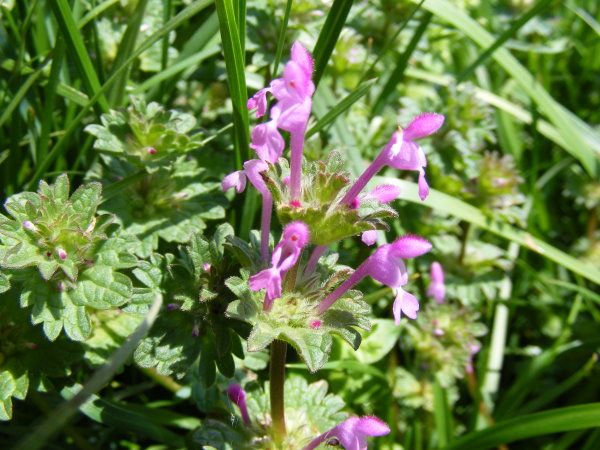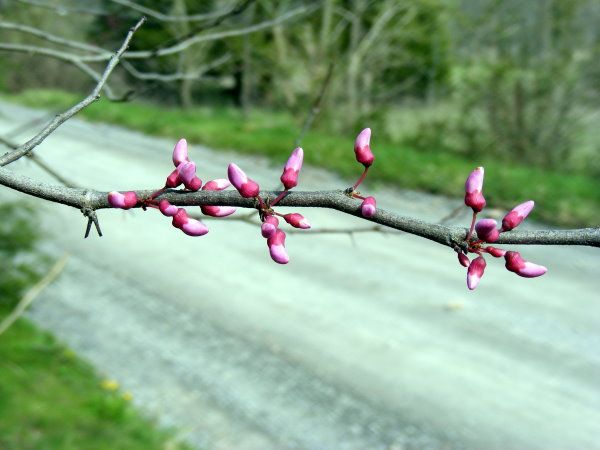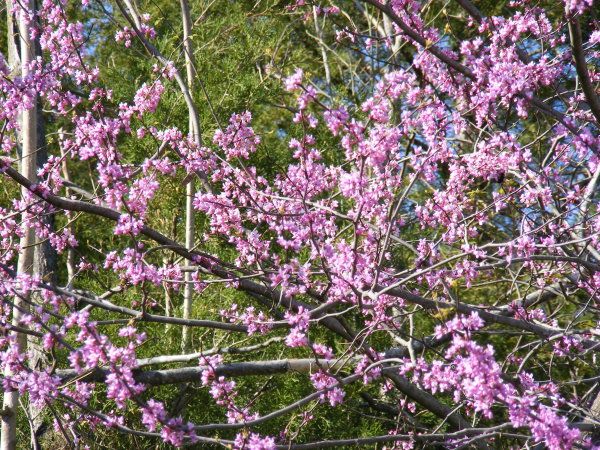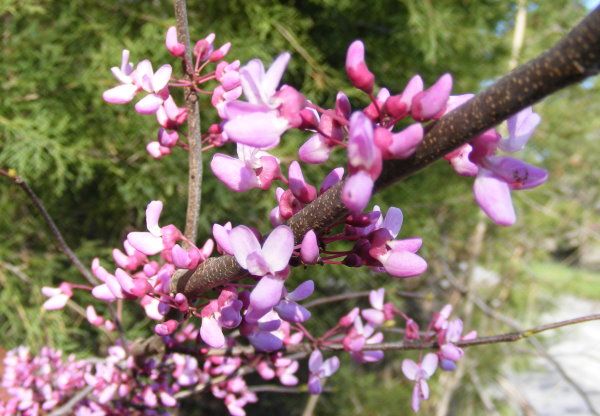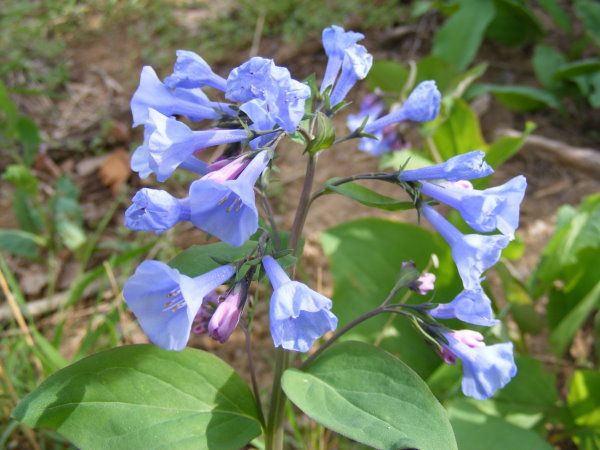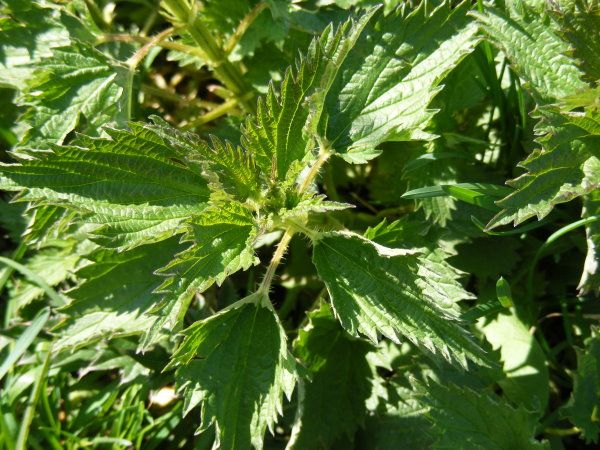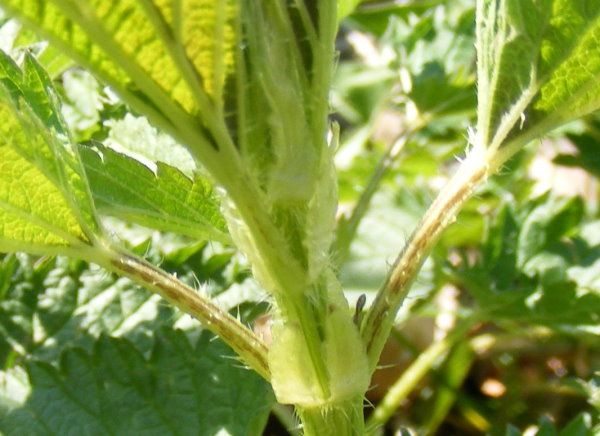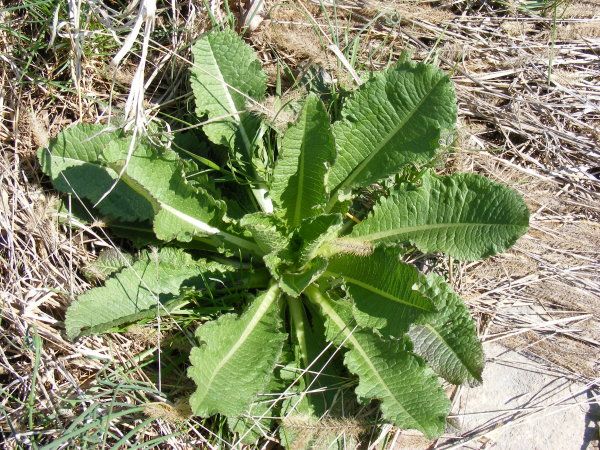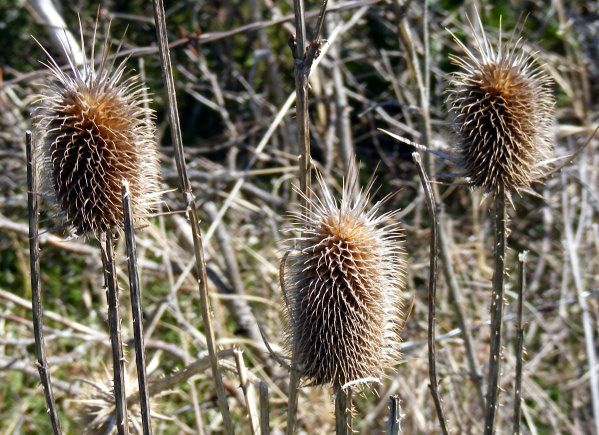It looks like you're using an Ad Blocker.
Please white-list or disable AboveTopSecret.com in your ad-blocking tool.
Thank you.
Some features of ATS will be disabled while you continue to use an ad-blocker.
share:
reply to post by jennybee35
The previous plant appears to be Senecio vulgaris, aka Common Groundsel.
here's another one that I have been able to identify..
Lamium amplexicaule aka Henbit
A useful write up on henbit found here...
The previous plant appears to be Senecio vulgaris, aka Common Groundsel.
here's another one that I have been able to identify..
Lamium amplexicaule aka Henbit
A useful write up on henbit found here...
Originally posted by AnteBellum
I tried everything to figure this one out, but couldn't come to a conclusion.
I love threads like this. Here is one for you:
A very adaptable plant, there are a bunch of these near by my home right now. (Not actual picture)
I think this one is solved...
Ratibida columnifera aka Mexican hat, Prairie coneflower
reply to post by JacKatMtn
You got it!
I first noticed this plant because we have tons of humming birds around here and they seem to go for this flower but then never really stay and eat it?
You got it!
I first noticed this plant because we have tons of humming birds around here and they seem to go for this flower but then never really stay and eat it?
reply to post by JacKatMtn
I don't think this is henbit. At the bottom of the linked page is this:
On the plus side, wiki says it is a tasty salad green of the mint family, also! We have both types of plants, and I am betting you do, too!
I don't think this is henbit. At the bottom of the linked page is this:
Don’t confuse henbit with Glechoma hederacea, right, which has much larger flowers
On the plus side, wiki says it is a tasty salad green of the mint family, also! We have both types of plants, and I am betting you do, too!
Here is another really good, easy to grow plant to have. Common Yarrow. It does great in your flowerbed and is perennial. It's not invasive, but will
grow fairly larg clumps, and it is pretty, too.
Mine are the yellow ones, but they come in pink, white and red, too. Here is a good site for info on it's uses:
Yarrow uses
I have used it for several things, including when my mother had a terrible 9-month battle with kidney stones! It made her move a lot of fluid and kept her from getting a UTI while passing all the "pee-gravel" after the docs busted up the stones!
Mine are the yellow ones, but they come in pink, white and red, too. Here is a good site for info on it's uses:
Yarrow uses
I have used it for several things, including when my mother had a terrible 9-month battle with kidney stones! It made her move a lot of fluid and kept her from getting a UTI while passing all the "pee-gravel" after the docs busted up the stones!
reply to post by jennybee35
that similar looking plant in the henbit write up was provided so we don't confuse the two..
which sometimes causes confusion in itself
here's another source to help convince you that the plant in my pic is henbit
www.ppws.vt.edu...
that similar looking plant in the henbit write up was provided so we don't confuse the two..
which sometimes causes confusion in itself
here's another source to help convince you that the plant in my pic is henbit
www.ppws.vt.edu...
reply to post by JacKatMtn
You're right! And I really do have both! I may have to try some of both in a salad?! Do I feel brave today?
You're right! And I really do have both! I may have to try some of both in a salad?! Do I feel brave today?
reply to post by jennybee35
I'll have to do some more foraging to see if there are any yarrow in the fields near me, it seems to be a beneficial plant More info on yarrow here: en.wikipedia.org...
I did get out yesterday and think I found what I hope is the Eastern Redbud tree, they are abundant around here, and only recently learned that the flowers and seedpods are edible. Here's the pic...
Cercis canadensis aka Eastern Redbud
more info on Eastern Redbud here: en.wikipedia.org...
and a video...
While I am usually looking for plants that can be used for food or medicinal herbs, sometimes you just stumble upon something so nice looking, it deserves a photo.. Here's one from yesterday..
Mertensia virginica aka Virginia Bluebell
I'll have to do some more foraging to see if there are any yarrow in the fields near me, it seems to be a beneficial plant More info on yarrow here: en.wikipedia.org...
I did get out yesterday and think I found what I hope is the Eastern Redbud tree, they are abundant around here, and only recently learned that the flowers and seedpods are edible. Here's the pic...
Cercis canadensis aka Eastern Redbud
more info on Eastern Redbud here: en.wikipedia.org...
and a video...
While I am usually looking for plants that can be used for food or medicinal herbs, sometimes you just stumble upon something so nice looking, it deserves a photo.. Here's one from yesterday..
Mertensia virginica aka Virginia Bluebell
edit on Sat, 16 Apr 2011 12:55:33 -0500 by JacKatMtn because: add pics and link
reply to post by JacKatMtn
Well, thanks for the info on redbuds! We have a million of 'em, and I never knew they were edible!
Gotta go get in the garden while it's cooler, but today I'm gonna get some pics of mullein and some other good stuff to post.
Later!
Well, thanks for the info on redbuds! We have a million of 'em, and I never knew they were edible!
Gotta go get in the garden while it's cooler, but today I'm gonna get some pics of mullein and some other good stuff to post.
Later!
I have some mullein around here as well, but will wait to see how your's looks before posting the one's around here..
In the meantime here's another plant that's well known around these parts...
Urtica dioica aka Stinging Nettle
Here's a little bit closer look at what brings the pain, should you accidentally run into one in the field...
You may have felt like you were just stung by a group of bees
What is it?
In the meantime here's another plant that's well known around these parts...
Urtica dioica aka Stinging Nettle
Here's a little bit closer look at what brings the pain, should you accidentally run into one in the field...
You may have felt like you were just stung by a group of bees
What is it?
edit on Mon, 18 Apr 2011 11:46:28 -0500 by JacKatMtn because: (no reason given)
reply to post by JacKatMtn
I'd say stinging nettle, but it doesn't look quite like ours. We have a lot of it too, and it is HATEFUL!!!
I'd say stinging nettle, but it doesn't look quite like ours. We have a lot of it too, and it is HATEFUL!!!
reply to post by jennybee35
Stinging nettle is correct.. check out this close up look at the leaves and their armor..
There seems to be quite a variety of these, I know in this Green Deane video the nettles down in Florida look smaller and their leaves a bit different as well.
more info here:
en.wikipedia.org...
Stinging nettle is correct.. check out this close up look at the leaves and their armor..
www.thenakedscientists.com...
There seems to be quite a variety of these, I know in this Green Deane video the nettles down in Florida look smaller and their leaves a bit different as well.
more info here:
en.wikipedia.org...
What a great thread idea!
It really helps to get the old I.D. skills moving again.
Some nice macro shots there buddy
Those Henbit flowers are tiny.
Stop giving away the answers so quick, I want to play too
This is a great way to learn the plants throughout the seasons.
Most books tend to ID the plants off the flowers and you need to use all the features possible to make sure you have correctly identified the plant in question.
Besides the flowers you have features such as leaf shape, arrangement (how they attach to the stem), hairiness of leaves, vein structure, size of plant, growth location, etc etc.
If you are going to use these plants be sure to check that each part of the description matches what your book says.
GreenDean makes a great point about how plants will have differing growth habits due to location - there's often great variation just in plants in one small area.
I don;t care for Pawpaw fruit (which are only ripe after they get black and mushy) but if they grow in your yard I'd make a bet that you live very close to a body of flowing water. Pawpaw flowers in the winter but you rarely notice them because they;re brown. It is a GREAT wood for use with friction fire sets, possibly the best in our area.
The bark also makes great natural cordage and the leaves are a good bug repellant, they stink but a few around your shelter will help keep bugs at bay. Burning them in your campfire seems to discourage mosquitoes as well but that one is hard to prove. All around a pretty versatile tree, don't you think?
I can;t figure out how to embed pictures though. what's the secret?
Great thread idea - we gotta keep this one going.
Thanks, ATA
I dunno if Dean mentions this but Redbud seed pods are only good when young, they get very tough as they age,
It really helps to get the old I.D. skills moving again.
Some nice macro shots there buddy
Those Henbit flowers are tiny.
Stop giving away the answers so quick, I want to play too
This is a great way to learn the plants throughout the seasons.
Most books tend to ID the plants off the flowers and you need to use all the features possible to make sure you have correctly identified the plant in question.
Besides the flowers you have features such as leaf shape, arrangement (how they attach to the stem), hairiness of leaves, vein structure, size of plant, growth location, etc etc.
If you are going to use these plants be sure to check that each part of the description matches what your book says.
GreenDean makes a great point about how plants will have differing growth habits due to location - there's often great variation just in plants in one small area.
I don;t care for Pawpaw fruit (which are only ripe after they get black and mushy) but if they grow in your yard I'd make a bet that you live very close to a body of flowing water. Pawpaw flowers in the winter but you rarely notice them because they;re brown. It is a GREAT wood for use with friction fire sets, possibly the best in our area.
The bark also makes great natural cordage and the leaves are a good bug repellant, they stink but a few around your shelter will help keep bugs at bay. Burning them in your campfire seems to discourage mosquitoes as well but that one is hard to prove. All around a pretty versatile tree, don't you think?
I can;t figure out how to embed pictures though. what's the secret?
Great thread idea - we gotta keep this one going.
Thanks, ATA
I dunno if Dean mentions this but Redbud seed pods are only good when young, they get very tough as they age,
edit on 13-4-2011 by
Asktheanimals because: (no reason given)
reply to post by Asktheanimals
Here's one that I haven't identified yet..
Dipsacus aka Common Teasel
mdc.mo.gov...
www.cwma.org...
Here's what remains of last year's plants..
As the season goes on a straight thorny stalk grows up that can reach up to 5' tall, but usually in the 3-4 ft range..
Any clues on what this plant could be?
Here's one that I haven't identified yet..
Dipsacus aka Common Teasel
mdc.mo.gov...
www.cwma.org...
Here's what remains of last year's plants..
As the season goes on a straight thorny stalk grows up that can reach up to 5' tall, but usually in the 3-4 ft range..
Any clues on what this plant could be?
edit on Sun, 24 Apr 2011 10:30:05 -0500 by JacKatMtn because: (no reason given)
reply to post by JacKatMtn
That looks like Common Teasel to me.
Weed Description: An erect biennial with small prickles on the stem and distinctive spiny flower heads. Common teasel may reach 6 1/2 feet in height and is primarily a weed of roadsides, pastures, hayfields, and occasionally rosettes can be found in turfgrass. This weed is found throughout the United States except in the northern great plains.
Source of description and some accompanying photos: Link
That looks like Common Teasel to me.
Weed Description: An erect biennial with small prickles on the stem and distinctive spiny flower heads. Common teasel may reach 6 1/2 feet in height and is primarily a weed of roadsides, pastures, hayfields, and occasionally rosettes can be found in turfgrass. This weed is found throughout the United States except in the northern great plains.
Source of description and some accompanying photos: Link
Alright, here is one plant I have growing out in my backyard by the thousands. It is a VERY useful medicinal herb, and all parts are useable. I
started out with a few years ago, and now I literally have a living carpet right out my back door!
They do put on a bloom stem but the blooms are not very noticeable. They propagate by way of the seed that is dispersed from the bloom. Generally not a very well-known wild herb, but one of the best ones to have growing wild! It is also a sign of a healthy environment.
Good luck!! Forgot to add that the root, when chewed, is TERRIFIC for toothaches!
They do put on a bloom stem but the blooms are not very noticeable. They propagate by way of the seed that is dispersed from the bloom. Generally not a very well-known wild herb, but one of the best ones to have growing wild! It is also a sign of a healthy environment.
Good luck!! Forgot to add that the root, when chewed, is TERRIFIC for toothaches!
edit on 4/14/11 by jennybee35 because: forgot
reply to post by jennybee35
Do the bloom stems look like this?
GoneGrey I think you've nailed it...
Common Teasel...
Some interesting results from a search of Teasel..
Do the bloom stems look like this?
GoneGrey I think you've nailed it...
Common Teasel...
Some interesting results from a search of Teasel..
reply to post by JacKatMtn
Yes they do!! I think you've got it! And I hope you have it, if you know what I mean!
If you don't have any of this herb around, GET SOME!! So many uses, it's great. I'll let you post your answer and some links to the uses, if you wanna?!
Yes they do!! I think you've got it! And I hope you have it, if you know what I mean!
If you don't have any of this herb around, GET SOME!! So many uses, it's great. I'll let you post your answer and some links to the uses, if you wanna?!
new topics
-
Scary video of face in an abandoned house
Paranormal Studies: 1 hours ago -
Just Came Across These Unusual Old UFO Pics
Aliens and UFOs: 3 hours ago -
LA Mayor Bass Demanded $49M in Additional LAFD Cuts One Week Before Wildfires
Mainstream News: 4 hours ago -
Sepultura - Territory - With New Drummer Greyson Nekrutman
Music: 6 hours ago -
Carry On!
Short Stories: 6 hours ago
top topics
-
This should be plastered all over the airwaves
Mainstream News: 12 hours ago, 23 flags -
LA Mayor Bass Demanded $49M in Additional LAFD Cuts One Week Before Wildfires
Mainstream News: 4 hours ago, 17 flags -
Archbisop Vigano Warns of Deep State and Deep Church
New World Order: 14 hours ago, 16 flags -
Oh, Good Gosh. “Kremlin Warns Stay Away from Greenland.”
World War Three: 14 hours ago, 11 flags -
Just Came Across These Unusual Old UFO Pics
Aliens and UFOs: 3 hours ago, 4 flags -
Carry On!
Short Stories: 6 hours ago, 3 flags -
Sepultura - Territory - With New Drummer Greyson Nekrutman
Music: 6 hours ago, 2 flags -
Scary video of face in an abandoned house
Paranormal Studies: 1 hours ago, 2 flags
active topics
-
Los Angeles brush fires latest: 2 blazes threaten structures, prompt evacuations
Mainstream News • 363 • : marg6043 -
Statements of Intent from Incoming Trump Administration Members - 2025 to 2029.
2024 Elections • 64 • : WeMustCare -
This should be plastered all over the airwaves
Mainstream News • 54 • : fringeofthefringe -
Archbisop Vigano Warns of Deep State and Deep Church
New World Order • 9 • : CosmicFocus -
Post A Funny (T&C Friendly) Pic Part IV: The LOL awakens!
General Chit Chat • 8015 • : baddmove -
Carry On!
Short Stories • 2 • : JJproductions -
Scary video of face in an abandoned house
Paranormal Studies • 0 • : ColeYounger2 -
Trump says ownership of Greenland 'is an absolute necessity'
Other Current Events • 160 • : BedevereTheWise -
Oh, Good Gosh. “Kremlin Warns Stay Away from Greenland.”
World War Three • 30 • : ARM19688 -
A Flash of Beauty: Bigfoot Revealed ( documentary )
Cryptozoology • 8 • : BeyondKnowledge3

